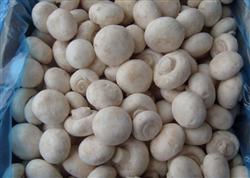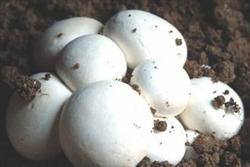Management of mushroom emergence period of Pleurotus ostreatus: how to make it produce more mushrooms? The omen of high-yield cultivation techniques of Pleurotus ostreatus before mushroom emergence

1. Control temperature and humidity. The cultivation of Pleurotus ostreatus begins to produce mushrooms about 20 days after covering the soil, the temperature is maintained at 20: 24 ℃, and the air relative humidity is 80% to 85%. During this period, it is generally impossible to spray water on the material surface, too wet and breathable, the hyphae are difficult to extend into the soil layer, too dry hyphae are sparse, maintain a suitable temperature and humidity, and the hyphae are white and exuberant. When the hyphae are covered with material surface, they should spray heavy water and let the hyphae lodge. At this time, spraying water is also called "mushroom water". In order to stimulate the formation of fruiting body, the water was stopped for 2-3 days, and the ventilation rate was increased at the same time. When the hyphae twisted into small white spots, they began to spray water to increase humidity.
II. Strengthen ventilation. At this time, ventilation should be strengthened, the air relative humidity should be maintained at about 90%, the temperature should be controlled at 12: 18 ℃, the amount of water spraying should be increased with the increase of mushroom quantity and the development of mushroom body, and the ventilation should be strengthened when spraying water. Do not spray water at high temperature and before picking mushrooms.
3. Increase water spraying. When the mushroom grows to the size of soybeans, it is necessary to spray heavy "mushroom water" once or twice a day to promote the growth of young mushrooms. after that, the water is stopped for 2 days, and the amount of spraying water is gradually reduced as the mushroom grows, and it is about to enter the peak of mushroom tide. It should be noted that when spraying water, be diligent, less and fine, spray less in cloudy days and not in rainy days; the principle of spraying water in the soil layer after mushroom production is to spray frequently, spray mushrooms more often, spray less when mushrooms are less; spray less in the early stage and spray more in the later stage.
4. Light mining and light handling. Mushroom production stage, every day to pick mushrooms, according to the size of the market needs, but can not open umbrellas, mushrooms should be gently twisted as far as possible not to bring out the culture material. Remove the mud root at the base of the mushroom stalk along with picking, so as not to affect the commodity value. Handle gently, the bruised area is very easy to change color.
5. Spray lime water. After picking a tide of mushrooms each time, tweezers should be used to remove the old roots and dead mushrooms left on the bed to prevent infection of green mold. The potholes where mushrooms have been picked should be filled with soil, keep the material surface flat and clean, finish treatment, spray 1% lime water again, and then manage according to routine management, and the second batch of mushrooms will appear in about 7-10 days.
6. Loosen the soil and spray fertilizer. Generally, 6-9 batches of mushrooms are harvested, and after three batches of mushrooms are harvested, the soil layer should be loosened, holes should be made, the ventilation in the material should be improved, and topdressing should be sprayed before the new buds grow to the size of the beans after picking mushrooms. Commonly used fertilizers mainly include 0.02% yeast powder, 0.3% urea or 0.4% potassium dihydrogen phosphate solution.
- Prev

High-yield cultivation techniques of Pleurotus ostreatus
Pleurotus ostreatus, also known as white mushroom, foreign mushroom, mushroom, etc., is the most widely cultivated species, its meat is fresh and tender, delicious, rich in protein and a variety of essential amino acids and trace elements, and has a certain medical value, so it is more and more popular among people. First, the cultivation season.
- Next

Control of physiological diseases in mushroom emergence stage of Pleurotus ostreatus
In the production of Pleurotus ostreatus, in addition to routine management, the following four key points of water use should be correctly grasped and applied in the production of Pleurotus ostreatus from covering soil to mushroom. it plays an important role in ensuring the quantity and vitality of mycelium, the consistency of bud quantity and bud appearance, the healthy growth of fruiting body and its commodity quality. 1, "pressure bacteria water" to.
Related
- Fuxing push coffee new agricultural production and marketing class: lack of small-scale processing plants
- Jujube rice field leisure farm deep ploughing Yilan for five years to create a space for organic food and play
- Nongyu Farm-A trial of organic papaya for brave women with advanced technology
- Four points for attention in the prevention and control of diseases and insect pests of edible fungi
- How to add nutrient solution to Edible Fungi
- Is there any good way to control edible fungus mites?
- Open Inoculation Technology of Edible Fungi
- Is there any clever way to use fertilizer for edible fungus in winter?
- What agents are used to kill the pathogens of edible fungi in the mushroom shed?
- Rapid drying of Edible Fungi

